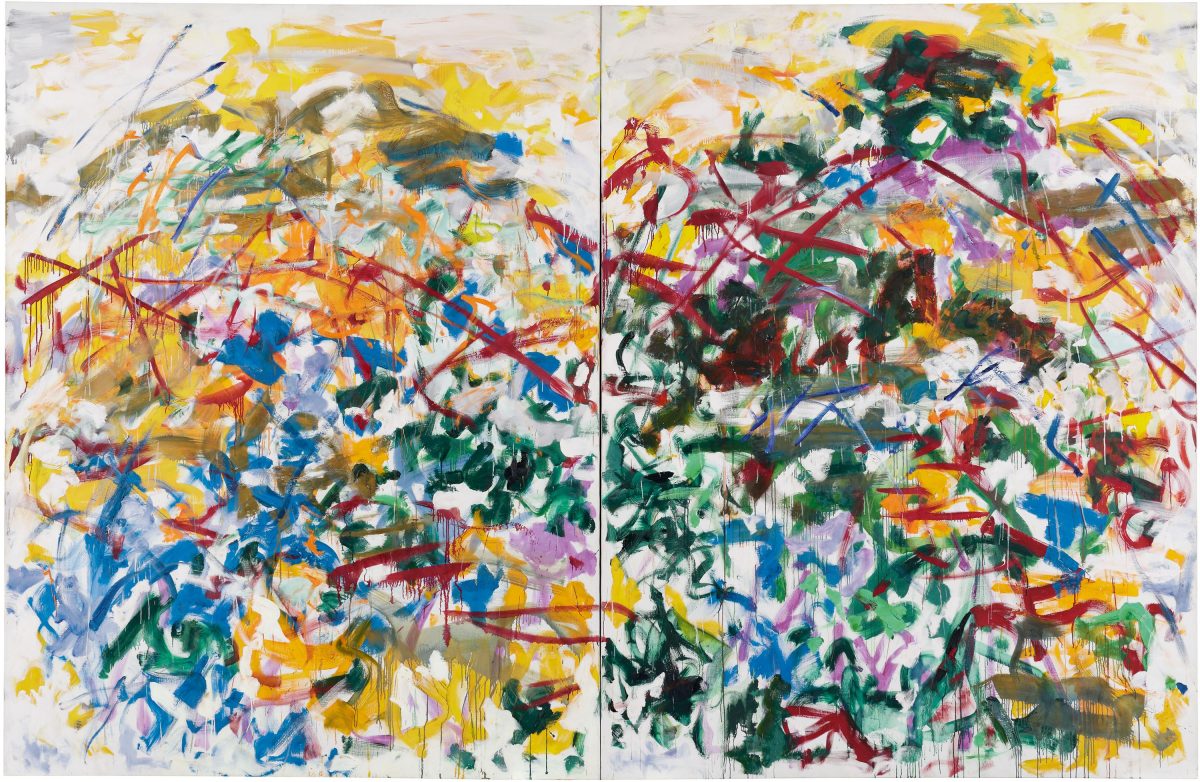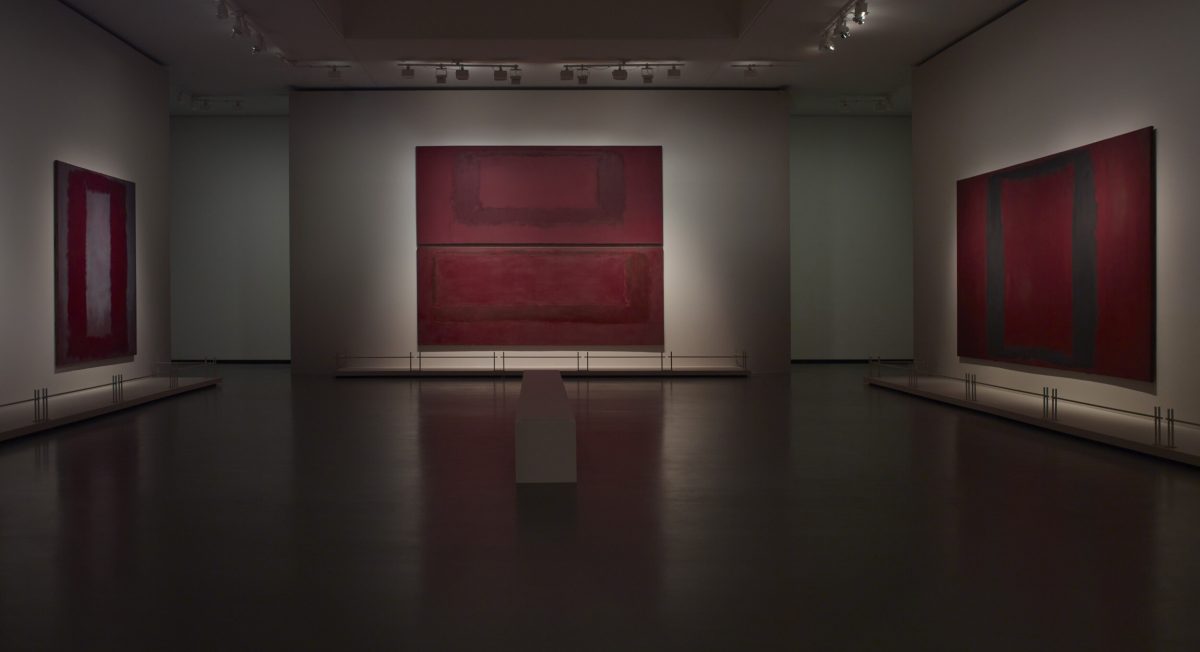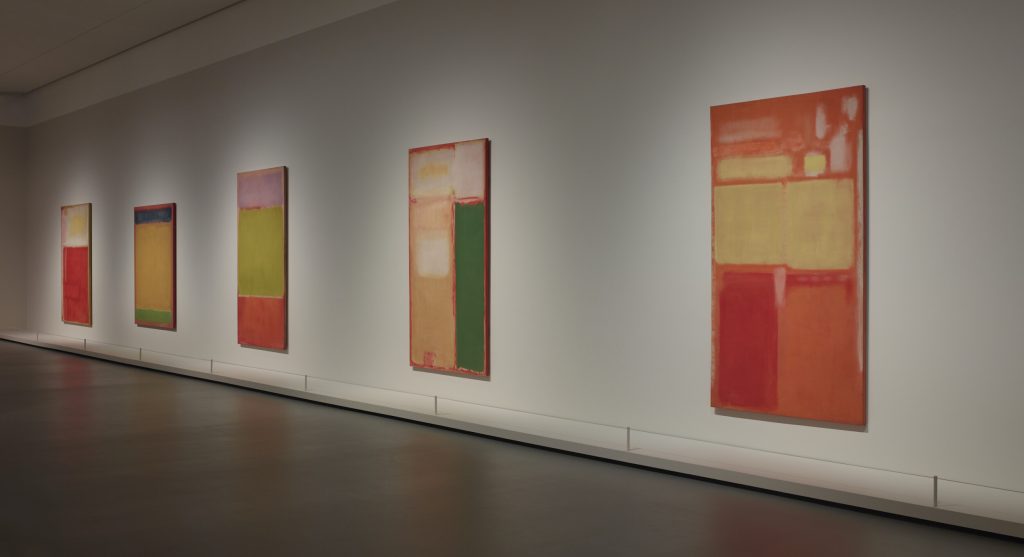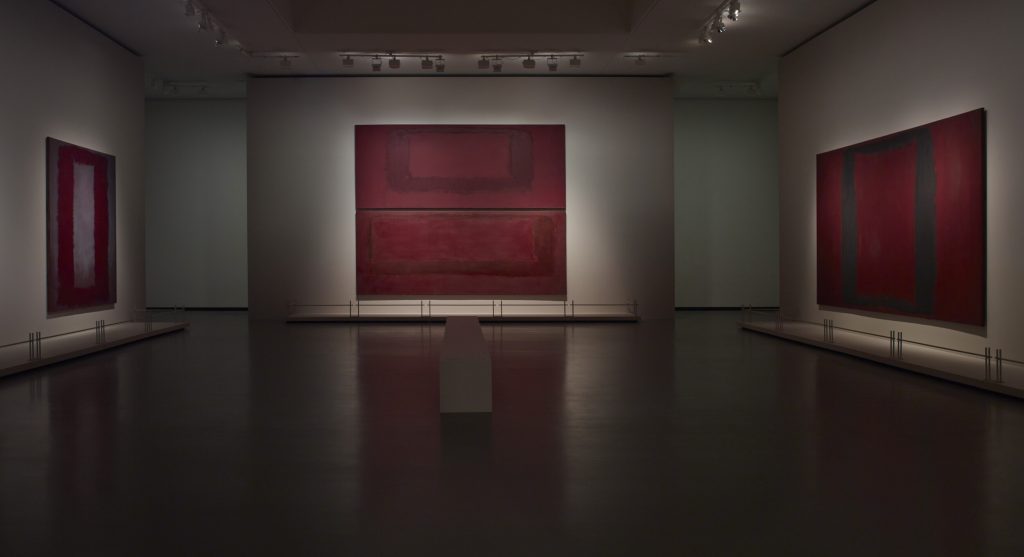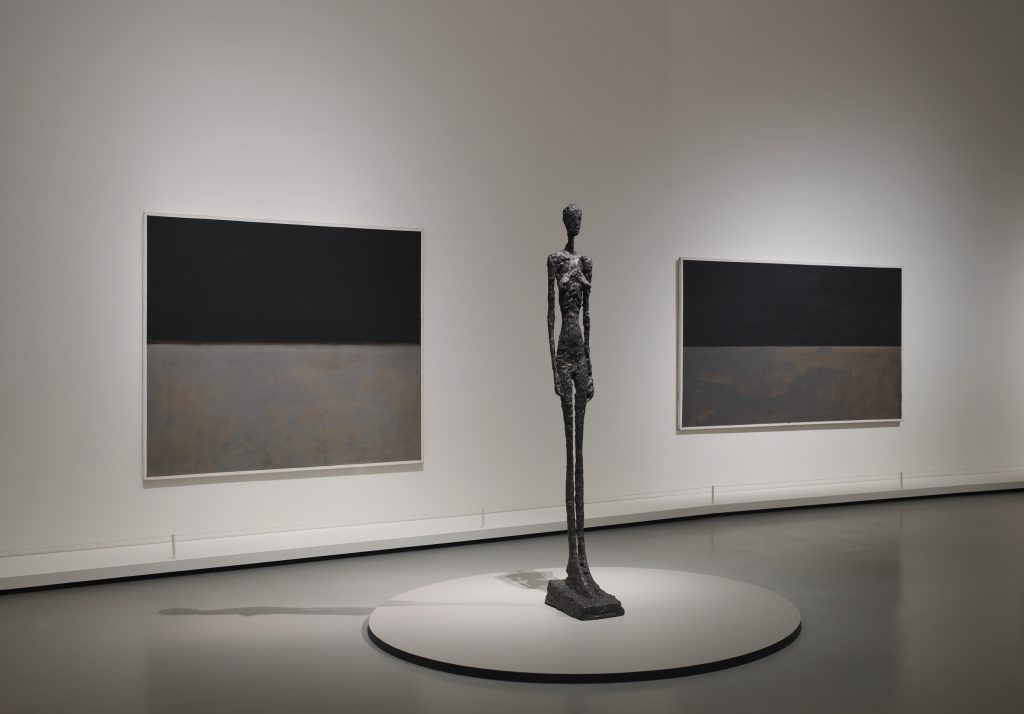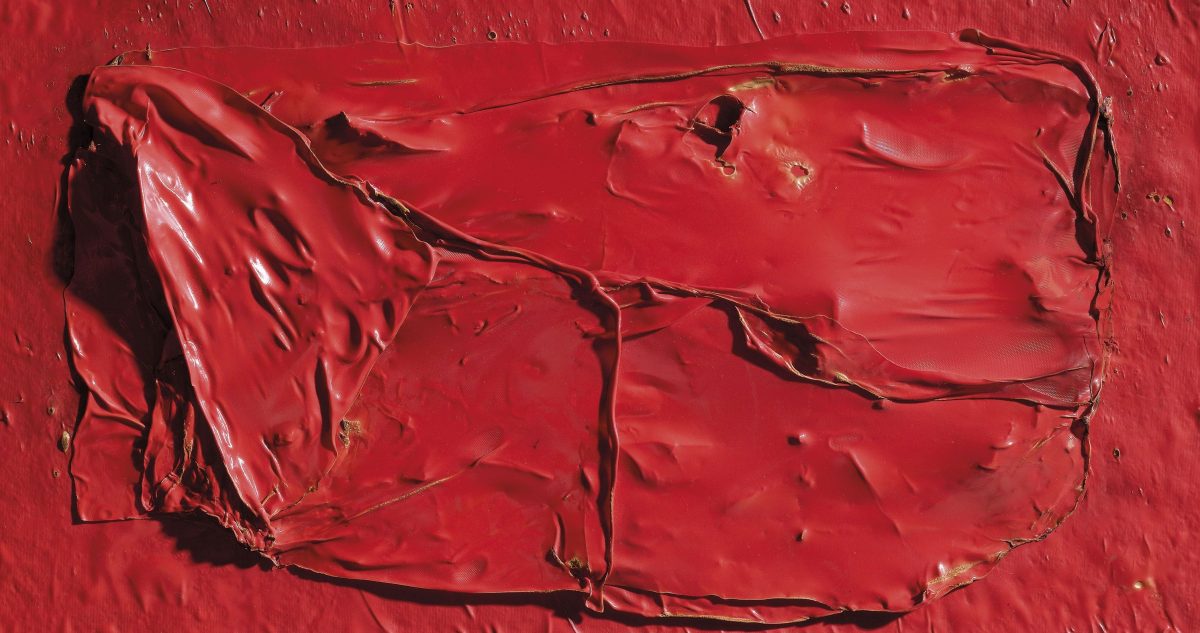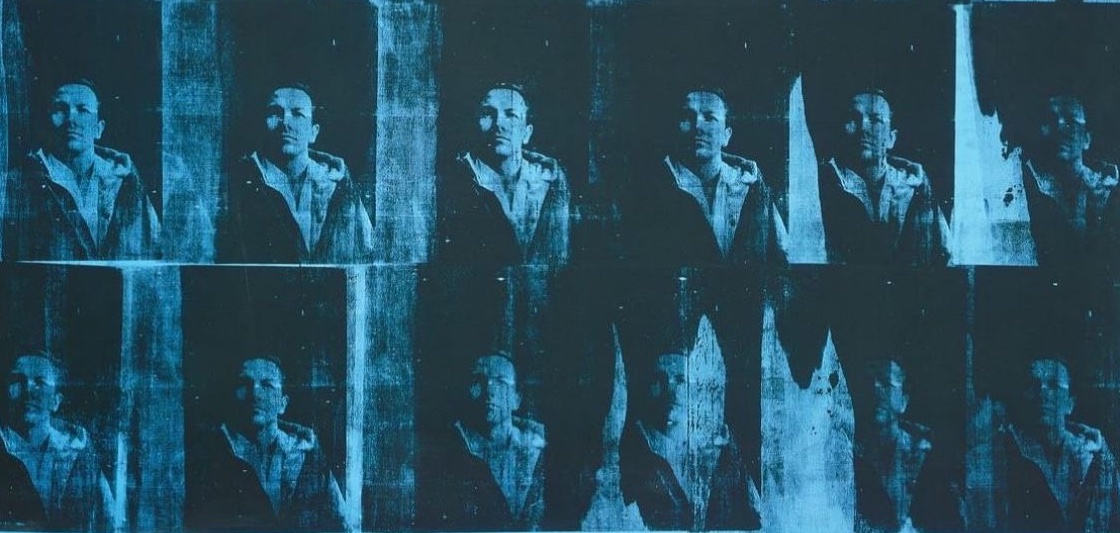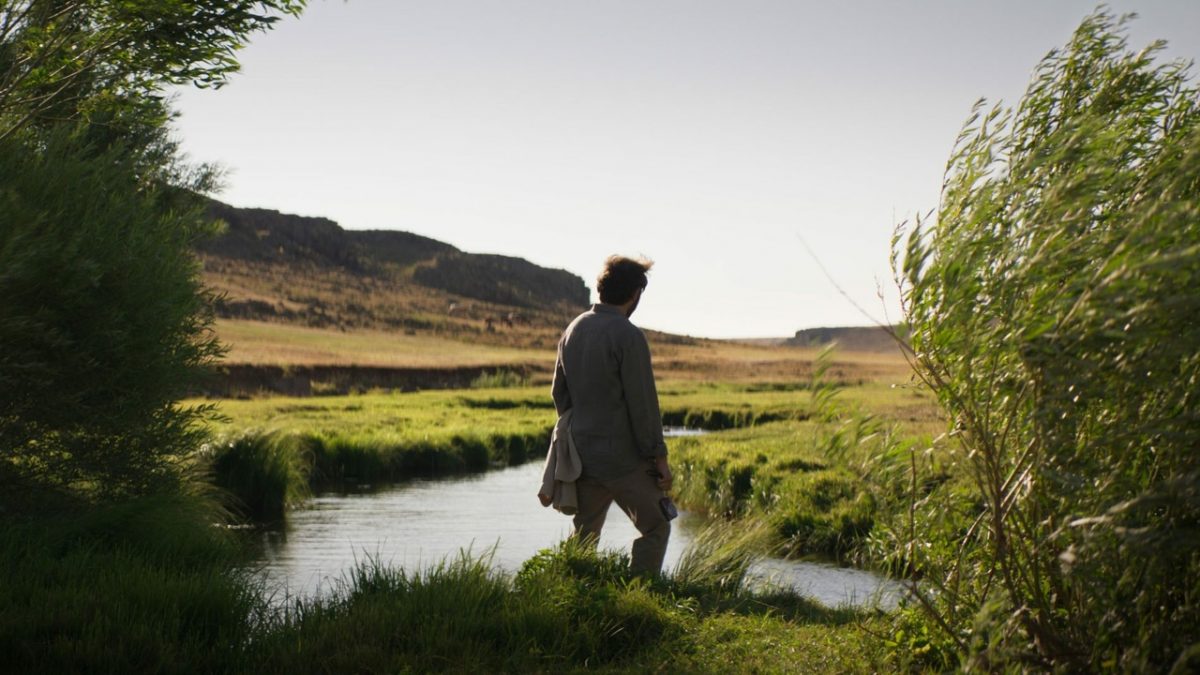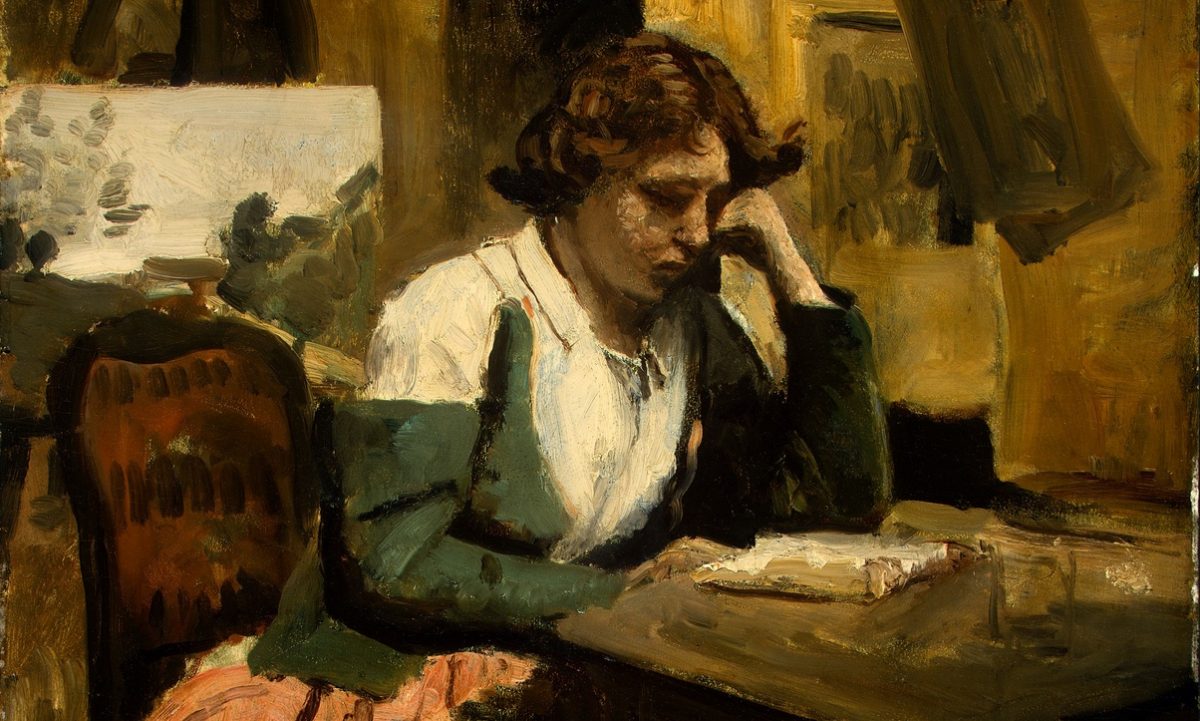Nearly all novels remind us that the story of one person both is and is not the story of other people, each of whom is the main character of their own life. In the populous characterological world of Flaubert’s Madame Bovary, Hippolyte, a stableman at the inn in Yonville, must be pushed to the back of the crowd so Emma Bovary can seize the foreground. Hippolyte may in principle be worthy of a whole novel of his own, but that would be a different book; Hippolyte, not Madame Bovary. Rare exceptions such as Durrell’s Alexandria Quartet or Faulkner’s Sound and the Fury, in which narrative agents take turns as primary and secondary characters, prove the rule: the bourgeois, legal principle that all men are equal under the law can’t be neatly transposed to the bourgeois novel, in which men and women are necessarily unequal under their creator.
The problems of narrative priority and characterological hierarchy – the axiomatic impossibility of every character achieving protagonist status – are especially rich in the realist novel, which emerges in an era of abstract equality among citizens, and simultaneous inequality in those citizens’ real conditions of life. Such problems don’t attend earlier forms (the ancient epic, for example, or the Elizabethan play) – quite natural that god-like heroes should get more air time than ordinary mortals, nobles more than commoners! It’s the legal principle of equality under the law, along with the democratic precept of equal dignity among human beings, that creates our uneasiness about the character system, as Alex Woloch calls it in his fundamental study, The One vs. the Many (2003), of the realist bourgeois novel. Since the flourishing of the realist novel in the nineteenth century, the form has exhibited what Woloch identifies as two apparently contradictory achievements: both ‘social expansiveness’ (encompassing everyone) and ‘depth psychology’ (usually reserved for just one person). To apply Woloch’s general formulation, Madame Bovary relies on this dialectic, at once casting ‘a wide narrative gaze over a complex social universe’ and depicting ‘the interior life of a single consciousness’.
When it comes to the identity of that consciousness – that is to say, who’s privileged with main character status – there exists an uncomfortable overlap or simultaneity between justifiable narrative efficiency on the one hand, and dishonourable existential or social priority on the other. At the level of the individual work, the former’s a simple matter of technique (we can only inhabit one consciousness at a time). At the level of the novel in general, however, it’s one of politics and even prejudice. Woloch’s readings of Balzac, Dickens and Austen suggest that in the realm of class, the two principles of narrative expediency on the one hand and social privilege on the other more or less coincide: protagonists are typically bourgeois subjects whose important interactions involve other bourgeois subjects, while the ranks of minor characters are filled out with silent, often nameless members of the working class. (John Lennon, in all the hale rancour of ‘Working Class Hero’, could have been singing about realist fiction and its character system: ‘As soon as you’re born, they make you feel small/By giving you no time instead of it all’.)
If this unequal apportionment of narrative attention is unsurprising – after all, it was the rich and educated who had the wherewithal to write and publish novels, and social solipsism means that their milieux were reflected in their fiction – we encounter something more complex in the realm of gender. While it would be a fair generalization to say the realist novel has neglected the proletariat, the same can’t be said of women: our socio-political subjugation did not correspond to narrative sidelining. For every serious young man pursuing the Napoleonic slogan of ‘la carrière ouvertes aux talents’, there exists a middle-class young woman whose intelligence and desire make her a main character, and whose social unfreedom (especially to marry and divorce, and to acquire and dispose of property) provides the novel its engine of tragedy. And to the ranks of the heroines of Eliot, Gaskell, Chopin and the Brontë sisters can be added an equally credible fictive sorority – that of male-authored women trying to get free: Emma Bovary, Isabel Archer, Anna Karenina, Effi Briest, plus a constellation of Hardy heroines among them. If gender difference hasn’t resulted in the same imaginative disability as class difference, this may be explained by the fact that men and women tend to get to know each other intimately in a way that property-owners and wage-laborers don’t. So it is that Flaubert, unable to get pregnant yet able to write persuasively of maternal ambivalence, could declare ‘Madame Bovary, c’est moi.’
A few years ago, the critic Merve Emre tweeted about the Molly Bloom soliloquy that concludes Ulysses, writing: ‘I feel confident insisting that it is the best – the funniest, most touching, arousing, and honest – representation of a woman ever written’, adding, ‘this is shocking to me’. What’s salient here is not so much the testimony to a male author’s representation of a woman, as the word ‘shocking’. Such shock seems to emerge from a current intellectual mood of what might be called possessive identitarianism, which asks why should men speak for women, or indeed white people for people of colour, or cis people for trans people, or citizens for undocumented immigrants, when the latter groups can speak for themselves with more authority than any ventriloquist? Neither glib universalism, nor mutually incommensurable alterity, provide a satisfactory answer. And if such identitarianism were pursued to its extreme – dictating that fiction comprise only protagonists corresponding perfectly to their author’s identities – we’d be left with few novels.
In keeping with this anxiety, recent years have seen a proliferation of a type of work we might call the feminist corrective – the rewriting of canonical texts, ones originating in past paradigms of even greater sexism, from the perspective of an overlooked female character. An early instantiation came from Italian novelist Pia Pera, whose Lo’s Diary (1995) told the story of Nabokov’s Lolita in the voice of its eponymous teenager rather than that of her middle-aged male abuser. More recent examples include Pat Barker’s reimagining of the Iliad from the perspective of Briseis, The Silence of the Girls (2018), Jeet Thayil’s retelling of the New Testament as ventriloquized by its various women, Names of the Women (2021), Natalie Haynes’s A Thousand Ships (2019) her version of the Trojan War from an exclusively female perspective, and her Stone Blind (2022), a reconstruction of Medusa – ‘the original monstered woman’ as its jacket copy has it.
These examples named above take ancient, non-novelistic forms of literature as their starting text, but the most interesting examples of the genre are to be found in novels that rework novels. Among them, one of the most overtly hostile to its predecessor text is Lucy Snyckers’s Lacuna (2022) which presents itself as agonistic redress to J.M. Coetzee’s Disgrace (1999). (Curiously, it seems to have been with the feminist corrective genre in mind that Coetzee wrote Elizabeth Costello (2003). That novel’s eponymous figure is a fictional Australian novelist best known for a book whose main character is Molly Bloom.) But what exactly is to be corrected in Disgrace? Much of the dynamism of Coetzee’s book lies in its troubling narrative symmetry. In the first half, a white professor, David Lurie, rapes one of his female students. Chillingly, in his own assessment David evades the term. ‘Not rape, not quite that’, he tells himself with repulsive ease and self-exculpation, ‘but undesired nevertheless, undesired to the core’. Later, David’s ex-wife will accurately diagnose him: ‘you were always a great self-deceiver, David’. The author himself, however, is undeceived; Coetzee neither excuses nor anathematizes his creation. Exposed, David resigns and bolts to his daughter Lucy’s farm. When the novel’s second sexual crime occurs, it’s freighted by post-colonial history: Lucy is raped and the perpetrator is a Black man. Snyckers’s rejoinder to Coetzee is built around the conceit that there exists a real-life Lucy Lurie upon whom the author based his story. It’s this Lucy who narrates Lacuna and takes competitive pride in her trauma; at one point she fantasizes about dressing down another woman: ‘If they gave marks for rape trauma, mine would get an A-plus and yours would get a D-minus.’ Snyckers’s Lucy regards the narrative crimes committed by Coetzee as on par with the home invasion, arson and assault that she’s experienced. The author’s offenses, as Lucy sees them, include his appropriation of her suffering, his presentation of her fictional counterpart’s acceptance of rape as some sort of atonement for colonial sins, and – finally and least forgivably in her eyes – his reducing fictional Lucy to the titular ‘lacuna’ – a missing person in her own story.
There is, Snyckers/Lucy claims in Lacuna’s prologue, a ‘complete absence of the raped woman’s voice’ in Coetzee’s novel (‘the rape book’, as she refers to it.) The charge is readily refuted. Disgrace contains one of the more powerfully feminist orations of twentieth-century fiction: pregnant by one of her assailants and intent on keeping the baby, Coetzee’s Lucy makes a redoubtable speech to her horrified father: ‘You behave as if everything I do is part of the story of your life. You are the main character, I am a minor character who doesn’t make an appearance until halfway through. Well, contrary to what you think, people are not divided into major and minor’. With that, Lucy refuses minor character status, a refusal that seems directed at both her father and her author. When we compare Coetzee’s Lucy to Snyckers’s doubly-fictional Lucy, it’s as if Lacuna is dealing with a fictional, even fraudulent version of a real novel. In this way, Snyckers’s novel appears symptomatic of one of the least useful strains of identitarian politics, in which for a person characterized by one identity to speak for another person characterized by another amounts to the ‘erasure’ of the latter.
Snyckers seems to be replacing the idea of imaginative literature with literal testimony, which naturally can only be given by real people – a misprision arising from an over-hasty assimilation of literature to contemporary politics, in which the pieties of ‘listening’, and of ‘hearing from’ another voice can be conscience-salving substitutes for action. To invert this phenomenon: that we don’t have Lolita’s account, only that of her abuser, does not make Nabokov’s novel an endorsement of child rape. If Lo’s Diary was misbegotten it was perhaps due to an excessive belief in protagonism, in other words, the notion that hearing exclusively from one voice amounts to uncritical readerly sympathy. With Nabokov’s egregious and charismatic sex offender quite the opposite is true. When Humbert Humbert remarks, casually, and in passing, on the sound of Lolita’s sobs, it both indicts him and is grimly eloquent of his victim’s suffering.
A less antagonistic rewriting of a famous male author’s novel comes by way of Sandra Newman’s Julia (2003), ‘a feminist retelling’ of 1984 which boasts of being the first reworking of that novel to be approved by the Orwell estate. Unlike the original’s third person narrative, in which Winston is the main character and Julia his fellow party member and love interest, Newman’s novel is narrated by Julia herself, while hewing to the basic story of the original. If we take this work as exemplar, a merely cynical interpretation of the feminist corrective genre would attribute its rise to simple brand recognition. Orwell comes with seventy-four years of cultural cachet. The imprimatur of ‘feminist’ – having undergone its girlbossification via neoliberalism – also comes with dubious cachet, albeit a newer one. (Dubious since ‘feminist’ now too often describes something merely cosmetic, namely the substitution of some male executive with a female one who’ll oversee the corporation’s predations and exploitation just as efficiently as he did.) In this way, the conservative appeal of pre-approved prestige is given a little frisson of the putatively radical.
The totemic 1984, a book whose life has come to exist more beyond its pages than within them, is something more than canon; a work alluded to more than read. See the widespread abuse of the term ‘Orwellian’ to tar any political move found uncongenial – mostly from a book-banning right unwilling to acknowledge that Orwell was a committed socialist. Taking place in a future Britain in the grip of totalitarianism, and asking what possibilities of individual thought, freedom and selfhood exist under such circumstances, 1984’s protagonist, Winston, is necessarily more of a figure than a character; to borrow Forster’s term, he is ‘flat’, rather than a rounded, multi-dimensional person. This is also true of his lover, Julia. Brainwashed by the Party, neither has much ‘voice’ in a politico-literary sense. Orwell’s book is therefore a curious choice for a feminist retelling in that all its characters, whatever their gender, are effectively silenced. As Erich Fromm points out in the novel’s original Afterword: ‘the dehumanized characters of satire can be equated with the dehumanized subjects of totalitarianism. That is, the suffering of satirical characters is comical or inconsequential rather than tragic – because they are two-dimensional figures without a mature psychology, unable to inspire full sympathy in the reader.’ How does the Julia of Julia differ from the Julia of 1984? Not much. She remains chimerical. There is too meek and scrupulous a fidelity to the original. The wincing irony here is that of the sense of a novel written under Big Brother’s watchful eye – that of the Orwell estate. There are echoes, too, of the speciously feminist blockbuster reboot, albeit in higher-browed form. In the Hollywood formula, an established, profitable franchise exchanges men for women in the lead roles – usually resulting in a combination of select financial enrichment (a few studio executives) with mass cultural impoverishment. Part of that impoverishment is the way in which movies like Ghostbusters, Wonder Woman, and Ocean’s 8 trade on ‘feminist’ as if it were a synonym for ‘woman’ and vaunt the phrase ‘ass-kicking’ as though the violence enacted on screen by male characters becomes somehow emancipatory when perpetrated by female ones.
The faulty logic that views female liberation as a matter of personnel exchange (all men = bad, all women = good) is nonetheless aligned with a worthy epistemological question. Can a man rightly (in both senses: persuasively and justly) conjure the reality of a woman? This inquiry depends on the gender binary; it ceases to exist in a state of ungendered innocence. The closest a reader gets to that utopia is, paradoxically, when she is at her most impressionable. A girl reader of, say, Arthurian legend, not yet familiar with the terms ‘agency’ or ‘patriarchy’ and not yet exposed to the forces of a world whose problems include a pervasive erotics of female subordination, feels little impediment in imaginatively inhabiting the role of gallivanting hero rather than passive heroine. She’s valiant King Arthur, not maundering Guinevere; it doesn’t yet occur to her that empathetic allegiance should run along gender lines. This is both potentially emancipatory and possibly deleterious: soon she might wonder why Arthur is deemed a worthy protagonist and Guinevere isn’t. Is this a reflection or even endorsement of the exclusionary sexism of the world? Or, worse, does his maleness somehow, improbably, make him a priori more interesting than Guinevere in her femaleness? Later, this hypothetical girl reader might encounter the cohort David Foster Wallace damned as phallocrats – Mailer, Miller, Roth, and Bellow – and experience the cramping dismay of mostly finding women instrumentalized to either frustrate or gratify male protagonists. If these works make manifest their era’s ghastly sexism (one can delight in Bellow’s febrile high-low prose while also recoiling every time the word ‘bitch’ blights the page) what is to be fixed here is too amorphous to warrant a feminist rewrite – more a miasma of prejudice, rather than a formalistic problem of character and elision.
The less successful feminist reworkings partake in the fallacy of ‘the one true story’, a monovocal ideology alien to literature, with its fundamental commitment to and reliance on intersubjectivity. Natasha Solomons’s Fair Rosaline (2023) for example, describes itself as not as a ‘retelling’ but an ‘untelling’ of Romeo and Juliet in which the title character (ditched by Romeo for her cousin in the original, lest you need a reminder) gets her own story. Shakespeare, so the implication goes, got it wrong. In Solomons’s novel, Rosaline ultimately saves Juliet from a man described in the author’s note as a ‘groomer’. In this way, Fair Rosaline seems to promote the idea that Shakespeare should be some kind of Esther Perel for teens, dispatching therapeutic pointers on healthy relationships. As the book’s press release reads: ‘it seems that forming an anxious attachment, and then suicide pact, with a controlling narcissist who comes and goes as he pleases may not have been the best model of true love to teach young literature students’. Even if delivered facetiously, such an attitude erases character in any meaningful sense of the term, by denying a fictional figure moral complexity and reducing them to something inert as a role model.
The presence of frustrating or misbegotten examples do not, however, make this a sterile genre. A rough typology emerges. The bad faith antagonism of Snyckers and Solomons presents one type, the redundantly respectful mode of Newman another. A third approach, in which the relationship to the original text is simultaneously complementary and critical, proves the most dynamic. Per Henry James: ‘really, universally, relations stop nowhere, and the exquisite problem of the artist is eternally but to draw […] the circle within which they shall happily appear to do so.’ No man or woman is an island, not even a person on a literal island — as demonstrated by Foe, Coetzee’s 1986 reworking of Robinson Crusoe narrated by a female castaway. With 2003’s Elizabeth Costello, Coetzee performed a similar sleight of hand. As Elizabeth explains from within the novel: ‘Certain books are so prodigally inventive that there is plenty of material left over at the end, material that almost invites you to take it over and use it to build something of your own’. The implication here of fiction’s generative capability is heartening. It is because Molly Bloom is such a rightly written woman that she invites response as complement, rather than impels it as corrective. Elizabeth’s fictional novel is an enthusiastic supplement to Joyce’s real novel, taking up Ulysses’ implicit invitation to ‘build something of your own’.
Within this third type, what we might call the critical complement, the most exciting new addition comes not from a woman rewriting a male narrative but from a black novelist reconfiguring a canonical white story. Percival Everett’s James, published next month, is a revision of The Adventures of Huckleberry Finn, narrated not by Huck, the young white boy runaway, but by his friend Jim, the fugitive slave with whom he takes a raft down the Mississipi. Everett is not so much silencing the original as engaging it in conversation. Dialogue, especially between Huck and the narrator, forms a large part of the book, and thrillingly, the latter is given not one voice but effectively two – the interplay of these two voices lends the book a mordant dynamism. First, there is the speaking voice our narrator uses with white people. This is Jim-the-slave, whose exaggerated vernacular resembles Twain’s original. Second, there is the inner voice – sagacious, circumspect, wry – of James-the-man, and it’s this voice, the one we understand as the character’s ‘true’ voice, that narrates the novel. So it is that our narrator can outwardly answer one white character perturbed by signs of a disturbance in the library like this: ‘No, missums. I seen dem books, but I ain’t been in da room. Why fo you be askin’ me dat?’ while later, reflecting on Voltaire, Rousseau and Locke, can privately think to himself: ‘How strange a world, how strange an existence, that one’s equal must argue for one’s equality, that one’s equal must hold a station that allows airing of that argument, that one cannot make that argument for oneself, that premises of said argument must be vetted by those equals who do not agree.’ The book’s drama has less to do with Huck’s moral awakening via the plight of his enslaved friend (even if that narrative thread remains) and more to do with the way in which the self-actualized voice of James must be freed from interiority to literally speak, thereby vanquishing, or at least claiming primacy over ‘Jim’. In a Tarantino-esque final flourish, our narrator trains a pistol on a slaver and declares, before wasting the guy: ‘I am the angel of death, come to offer sweet justice in the night. I am a sign. I am your future. I am James.’
James’ most obvious antecedent is Jean Rhys’s terrifying and indelible Wide Sargasso Sea (1966) which takes Jane Eyre as its predecessor, and proceeds in the same dialogic spirit as Everett’s novel. ‘Do you think’, Jane demands of Mr. Rochester in Brontë’s original, with all the indignation of Coetzee’s Lucy Lurie inveighing against her father a hundred and fifty years later, ‘because I am poor, obscure, plain, and little, I am soulless and heartless? You think wrong! – I have as much soul as you – and full as much heart!’ Security, for Brontë’s soulful and impecunious heroine, finally comes by way of a dead wife – the banished ‘madwoman in the attic’ and in Wide Sargasso Sea that silenced voice finds full expression. The implication of Rhys’s book is not that Brontë’s needed to be put right, but that hidden behind Jane’s story is the story of another woman. Wide Sargasso Sea assumes its own priority, scarcely acknowledging the presence of Jane Eyre, in a way that Snycker’s Lacuna, for example – trapped in protest against a famous work, thereby ironically reinforcing that work’s power – cannot. Both Everett and Rhys seem to recognize, to return to Elizabeth Costello’s term, the prodigality of self in the figures of Jim and Antoinette. It’s this same abundance that also allows characters within novels to become more than the sum of their parts. In other words, this extramural phenomenon – taking a character from an existing novel and writing a whole new novel for them – redounds upon the intramural qualities of literature.
Norman Rush’s Mating (1991) for example, might read in precis as a howler of white saviourism and sexism: ideologue white guy (sporting a ponytail, no less) instigates a female-only utopia in Botswana, and is pursued by a besotted white woman. Yet the ways in which Rush’s main characters refract, alter and complicate one another mean they cannot be reduced to damning superficial readings – he is not merely an egoist with a ponytail, she is not merely an admirer with a slavish crush. The implication here – that fictional people are brought into greater aliveness by one another – sits uncomfortably alongside a predominant strain of liberalism in which scarcity logic presumes a zero-sum situation of attention and sympathy. Such logic does indeed apply to the hiring committee and the judging panel – only one person, after all, can be awarded the tenure track job or the lucrative prize – but the spoils of readerly attention are less bounded. Sympathy is not a discrete and finite resource, and the dialogic world of fiction is not one but many worlds.
To use an overtly gendered term, the critical complement’s mode is not one-upmanship so much as fellowship. Rhys is not suppressing Brontë’s Jane, but adding to what she called ‘the lake’ – as one of her grandest, somewhat humble-bragging, yet most quotable pronouncements has it: ‘There are great rivers that feed the lake, like Tolstoy or Dostoyevsky. And then there are mere trickles, like Jean Rhys. All that matters is feeding the lake’. When it comes to rectitude, literature is about as biddable as water. It’s not to be corrected but rather complemented and kept flowing with fresh currents. If contemporary fiction and its reception are suffering from Procrustean applications of non-literary logic, there’s optimism to be found in this flow being reversed – in the thought of some countermanding undertow that would bring generative literary principles of polyphony and healthy disputation trickling back into the political discourse.
Read on: Rachel Malik, ‘We Are Too Menny’, NLR 28.
